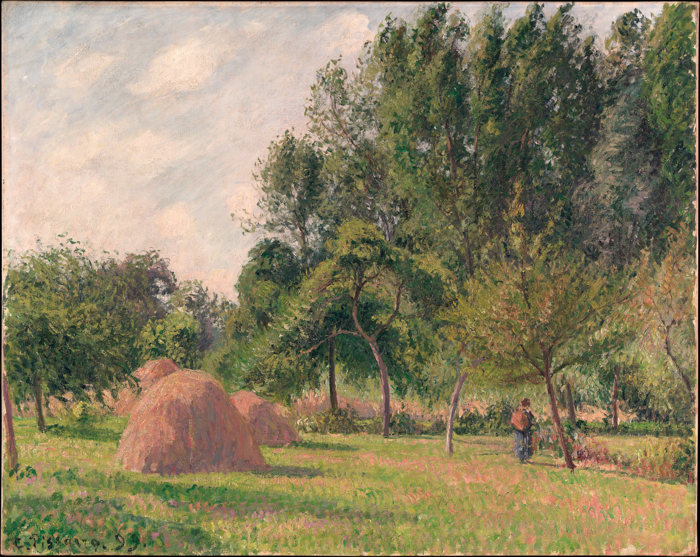'Tis the Season!

Summer and winter and springtime and harvest,
Sun moon and stars in their courses above,
Join with all nature in manifold witness,
To Thy great faithfulness, mercy, and love. (Thomas Chisholm)
Here in these lines from the gospel hymn Great is Thy Faithfulness, the four seasons, the cosmos, and all creation erupt in joyful praise celebrating the glory of God. The Church sings its faith by paying close attention to the rhythms of our living, marking time in a biblical way, and observing the seasons of nature; all powerful reminders of a God who is faithful to His promises, abounding in mercy, and steadfast in His love.
A Unique Marking of the Seasons
Together with much of the world, we mark time by the recurring seasons. Of course, we know that depending on where we live, various population groups around the globe will experience seasonal changes differently. Even in the tropics where seasonal change is less noticeable, or non-existent, there still are particular seasons. For instance, there is a rainy season and a dry season. Yet, however they are experienced, all seasonal observances comprise the ways and days around which the human family organizes living, learning, growing, and playing. Seasons connect past and present; they create meaning out of experience and tradition.
Just as the natural world marks time with its seasons, so does the Christian world.
More specifically, the church observes six seasons as portals to discovery and gospel proclamation. They are not captive to the natural world, to the planet earth’s rotation on its tilted axis, or its revolution around the sun. They are not necessarily concerned first and foremost with chronology or markers for the passage of time. It does not matter where one lives on the earth, nor how differently seasons are experienced in the natural world. Anyone in any place can name and know the Christian seasons, live in their power, mystery, and beauty, and be transformed by them. They are all faith-forming in their intentions.
How the Christian Seasons Help Us
Here is how observing the Christian seasons help us. They provide unique opportunities for recalling, rehearsing, and retelling the story of Jesus. They transcend the natural order and, like the gospel hymn noted above, point to the inescapable beauties and mysteries of the story of God.
Advent, the first season of the Church year, begins four Sundays before Christmas and ends on Christmas Eve day. Advent is followed by Christmas, the most recognized Christian celebration. Yet, Christmas is not just a one-day event, but a “season” that lasts from Christmas Eve Day (12 days) until January 6, or Epiphany. Effectively, the Christmas season is the period we know as the “Twelve Days of Christmas.” It is both a hopeful time, beginning with the tender story of the birth of Jesus, and a tragic one, ending with the Bethlehem slaughter of the innocents at the time the Magi visited the Holy Family with their gifts.
The next season is known as Epiphany and occurs from January 6 to Ash Wednesday. Epiphany is a time when the church can reflect on its global mission of manifesting Christ to the world. The season of Lent follows and prompts the Christian to consider with greater intensity and intentionality the depth of Christ’s suffering and death. The season of Easter, beginning on Easter Sunday, lasts 50 days, continuing until Pentecost Sunday, which is the beginning of Pentecost season. This season celebrates the birthday of the Church. Because the season of Pentecost lasts for a lengthy 26 weeks, we can adequately focus on our growth in grace and learn how the Spirit can continually transform us in the image of Christ.
A Case Study on Advent
Let’s do some spiritual reflection on one of these seasons, Advent, since it’s close at hand. We may need to begin thinking counter-culturally if we are going to benefit spiritually from the faith-forming potential of this season. If we live according to sacred times and seasons, we may want to push back on the insistence of the marketplace that we celebrate the seasons of Advent and Christmas on the world’s terms. We do not need any retailer coaxing us into running straight to the Bethlehem story. We will pace ourselves according to the bigger story that God is urging us to consider.
What is that bigger story? Traditional Scripture readings for the early Advent season are not initially about Christmas, per se. This season’s message isn’t about “Decking the Halls.” The concerns are not particularly chronological. Instead, we find ourselves immersed in a sobering vision of God’s ending to the world’s story. In these passages, even the world of nature reels in distress.
The season of Advent invites us to examine our hearts and commitments, to make sure that cares, anxieties, or enslaving habits and practices aren’t weighing us down and draining our energies, preoccupying us with the world’s sentimental views of Christmas. It is a bold proclamation of Christ’s coming again, connected to a deep longing for God to speak, to intervene, and to come close to us in power and glory in the now. It’s a little tricky, like patting our heads and rubbing our stomachs at the same time.
Yet the gospel calls us to keep one eye on the future, asking God to hasten the day of Christ’s appearing, while we keep another eye on the present, doing the things that the faithful servant is expected to do while the master of the house is away on business.
So, the season of Advent, observed Christianly, is not a time to gorge ourselves on as much Christmas as we can stomach. We are not counting down to Christmas, nor are we jumping prematurely into Bethlehem’s story. Instead, we are listening intently to Christ’s provocative words about the end of all things, about God’s plan to vindicate the purposes of God and establish God’s kingdom, not only spiritually, but literally and forever. We will hear Advent’s hopeful words preparing us for Christmas: “Heaven and earth will pass away, but my words will not pass away” (Matt. 24:35).
Advent, Christmas, Epiphany, Lent, Easter and Pentecost—these uniquely contoured Christian seasons become our spiritual friends, each one possessing its own powerful, faith-forming potential. As we live within them, we can determine to immerse ourselves devotionally in their messaging and to follow Christ more closely as we do. Let’s embrace the Christian seasons as a means of shaping the contours of our ever-expanding desire “to be filled to the measure of all the fullness of God” (Eph. 3:19b).
‘Tis the Season!
Merritt Nielson has a ministry career spanning 50 years including being former Director of Curriculum for Sunday School Discipleship Ministries. He currently serves as Constituent Engagement Manager for Nazarene Compassionate Ministries.
Holiness Today, Nov/Dec 2018
Please note: This article was originally published in 2018. All facts, figures, and titles were accurate to the best of our knowledge at that time but may have since changed.




